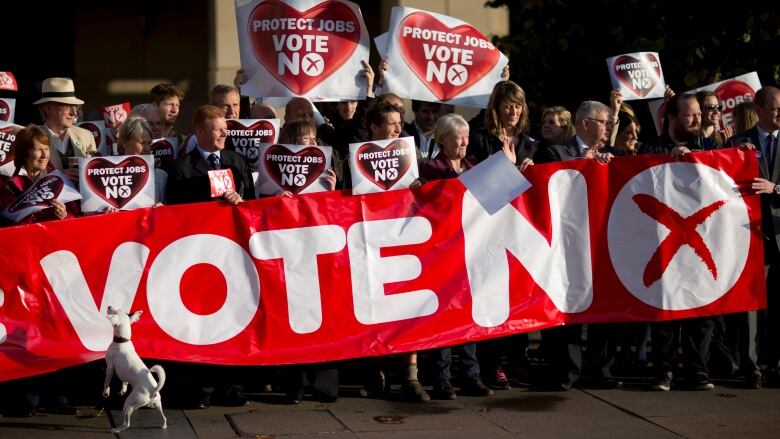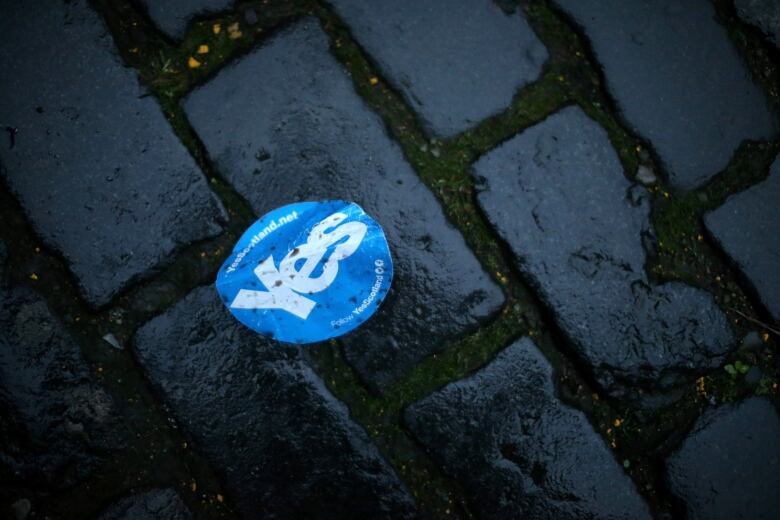Scottish referendum can teach Quebec valuable lessons
Two key players in 1995 Quebec referendum, Jean Dorion and Liza Frulla, talk about referendum results

Fifty-five per cent of Scots may have voted for Scotland to remain in the United Kingdom, but a former Liberal MP and key player in Quebec's 1995 referendumsaid there are important lessons to learn from the 45 per cent who did want to separate.
"Theres almost 45 per cent of Scots who said, Wewant out, so it cannot be business as usual, LizaFrulla told CBC Daybreak on Friday.
- PHOTO GALLERY |Scottish voters say No to leaving the U.K.
- ANALYSIS|What Scotland independence crusader Alex Salmond learned from Quebec
- Scotland's pro- and anti-independence camps weigh the lessons of Quebec
Frulla was a Liberal MP and the vice-chair of the No committee during Quebec's 1995 referendum campaign.
She visited Daybreak's studioalong with Jean Dorion, a former Bloc Qubcois MP and former president of the pro-sovereigntist St-Jean-Baptiste Society, to talk about what Quebec can learn from the Scottish referendum on independence.

Dorion said Quebec sovereigntists were watching the results with anticipation, hoping a Yes vote wouldperhaps breathe life into the province'sown sovereignty movement.
"I don't think it was realistic," Dorion said of some Scots' desire to separate.
Still, he said, there were very positive aspects of what happened.
First, the Yes side made considerable advancements in opinion polls over the past two years, Dorion said.
Second, the Scottish referendum helped set rules which are currently lacking in Quebec and in Canada regarding where to set the majority.
Some members of the sovereignty movement, as well as the NDP, have long advocated for the thresholdto be set at 50-per-cent-plus-one.
Clarifying the Clarity Act
The federal Clarity Act passed in 2000 as a reaction to Quebec's 1995 referendum set to establish some ground rules should a referendum be held anywhere in the country in the future, namely requiring a clear question to be asked at the polls, and a clear method of establishing majority.
- Quebec sovereigntists look to Scotland for independence hope
- Quebec premier, Scottish independence leader meet privately
Some federalists have called for the threshold for majority to be anywhere from 60 to 75 per cent.
Theres almost 45 per cent of Scots who said, "Wewant out,"so it cannot be business as usual.- Liza Frulla, former Liberal MP
Scotland, however, used the 50-per-cent-plus-one model. Dorion said it was a shining example of democracy in action.
"I think it's a precedent," Frulla said.
"The Clarity Act now says we have to have a clear question, but the majority is not fixed. It has to be clear to be recognized. The 50-per-cent-plus-one majority, like it or not, it has been set by Scotland... It means a Yes vote means as much as a No vote. This is something to be considered," she continued.
As for the question, Dorion said he's always personally stood for a clear question.
Quebec's 1980 and 1995 referendum ballots famously contained a convoluted question each time. The 1980 referendum ballot question contained 108 words; the 1995 ballot, 43 words.
In Scotland, the question was a simple six words: "Should Scotland be an independent country?"












_(720p).jpg)


 OFFICIAL HD MUSIC VIDEO.jpg)
.jpg)



























































































